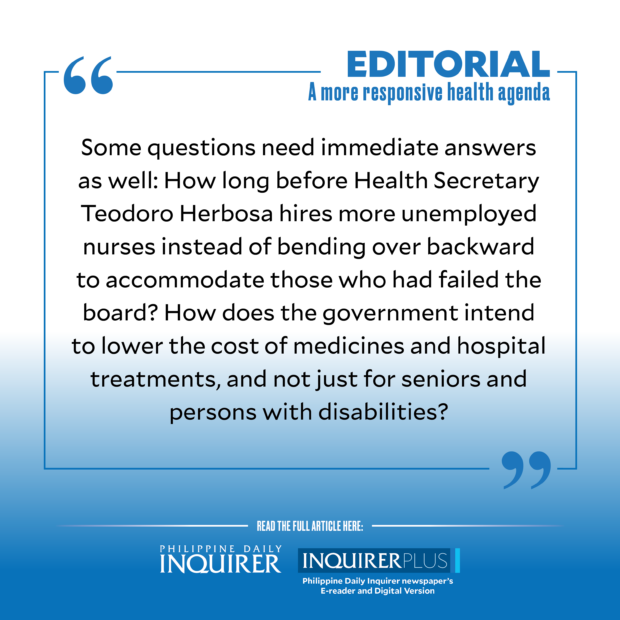Good news awaits the 70,000 Filipinos currently undergoing dialysis for chronic kidney disease (CKD). The Philippine Health Insurance Corp. (PhilHealth) has expanded its coverage of the blood-cleaning procedure, increasing the number of sessions from 144 to 156 per year. CKD affects approximately seven million Filipinos, with one new case reported each hour, as reported by the National Kidney and Transplant Institute (NKTI). Shockingly, CKD ranks as the seventh leading cause of death in the Philippines, with data from the Institute for Health Metrics and Evaluation revealing that it has become the fourth most common cause of death in the country in 2019.
Considering that a single dialysis session can cost at least P2,000 in most hospitals, and many patients require three sessions per week, the expanded PhilHealth coverage is undoubtedly a life-saving development. President Marcos proudly highlighted this accomplishment in his State of the Nation Address (Sona) last month. The President’s recent memo, dated July 27, adopting the Philippine Health Facility Development Plan 2020-2040 (PHFDP), is equally promising. It calls on local government units to establish health facilities within their jurisdictions. With a budget of P15 billion, the plan aims to transform the universal healthcare (UHC) law, passed in 2019, into an accessible, efficient, and robust healthcare system.
Implementing the UHC is one of the administration’s most significant projects. The President declared in June that the law ensures every Filipino citizen’s support in purchasing medicine, consulting doctors, and receiving hospitalization and treatment. Economists, like former economic planning chief Ernesto Pernia, predict that the UHC will substantially decrease the high out-of-pocket expenditure for healthcare. In 2017, over half of the total health payments in the Philippines came directly from individuals’ pockets, mainly due to the lack of PhilHealth coverage for outpatient medicines and the high cost of drugs. Pernia emphasizes that these expenses push more people into poverty.
While the UHC is set to be fully implemented over the next decade, it would be beneficial to expedite and advance the delivery of its benefits. The recent memo is a positive first step, with the Department of Health (DOH) listing the government hospitals that will have allocations for neonatal, heart, lung, kidney, and cancer specialty centers. Although most of these hospitals are located outside the National Capital Region, it would be advantageous to include health facilities in remote areas as well. These initiatives may appear promising on paper, but given the DOH’s history of bureaucratic delays (as observed in the tardy release of COVID-19 allowances for healthcare workers), stakeholders cannot be blamed for their skepticism.
During his Sona, the President promised to release special allowances as a form of gratitude towards health workers for risking their lives during the pandemic. However, despite the lifting of the public health emergency, there has been no categorical assurance of when these overdue allowances will be disbursed. This indifference to the plight of healthcare workers has led many Filipino nurses to seek employment in more welcoming countries, a worrisome trend that the President acknowledged in his Sona. He assured that education reforms, continuous training, and the safeguarding of their welfare are being addressed to counteract this exodus. Additionally, more Filipino doctors have been deployed to nearly 200 municipalities across the country, with plans for further deployments in the remaining 19 towns. While these efforts are commendable, it would be beneficial to have a more detailed long-term health agenda from the government. Furthermore, an extensive information campaign on PhilHealth benefits, including the Konsulta package, which provides members with free medicines and consultations, would be greatly appreciated.
Some pressing questions also need immediate answers. When will Health Secretary Teodoro Herbosa prioritize the hiring of unemployed nurses instead of accommodating those who have failed their board exams? How does the government plan to reduce the cost of medicines and hospital treatments for individuals other than seniors and persons with disabilities? With the President’s commitment to focusing on healthcare, can we hope that the much-needed medical facilities will receive priority investment from the Maharlika Investment Fund?
Your subscription could not be saved. Please try again.
Your subscription has been successful.
Read Next
Don’t miss out on the latest news and information.
Subscribe to INQUIRER PLUS to get access to The Philippine Daily Inquirer and over 70 other titles. Share up to 5 gadgets, listen to the news, download as early as 4 am, and share articles on social media. Call 896 6000.
TAGS:
For feedback, complaints, or inquiries, contact us.
Facebook 0TwitterLinkedIn0Pinterest0Email
Denial of responsibility! VigourTimes is an automatic aggregator of Global media. In each content, the hyperlink to the primary source is specified. All trademarks belong to their rightful owners, and all materials to their authors. For any complaint, please reach us at – [email protected]. We will take necessary action within 24 hours.


